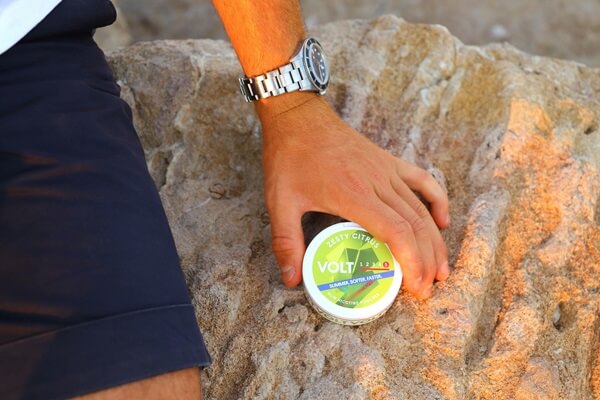Nicotine Pouches: Can They Compete With Vapes?

For those who wish to quit smoking, many products and tools have been developed over the years to aid in the journey. This report notes that nicotine replacement therapy (NRT) products like nicotine transdermal patches and lozenges are being used to alleviate cravings and withdrawal symptoms. Technology-based tools have also emerged as a potential aid. Artificial intelligence (AI) chatbots like QuitBot motivate quitting and information on cigarettes and their health impacts; you can read more about AI chatbots for quitting smoking here.
When e-cigarettes, known as vapes, hit the market, many saw them as a safer alternative to or a quitting aid for traditional cigarettes and other tobacco products. However, more health concerns around vapes and their widespread began to emerge in recent years. This overview reports that vapes were found to produce chemicals like acetaldehyde, acrolein, and formaldehyde, which are linked to lung and heart disease. Asthma, acute lung injury, and lung cancer may also result from the acrolein in vapes. Vapes and their flavors also attract new “never-smokers” and younger demographics, exposing more people to nicotine. As such, smoking alternatives and smoking cessation products are on the rise, with people learning more about such issues and wanting to quit. Nicotine pouches, in particular, are emerging as a potential option to replace e-cigarettes in the market. Here’s what you need to know about nicotine pouches, how they compare to vapes, and what is making them a major competitor:
What are nicotine pouches?
Nicotine pouches are small white packets containing tobacco-derived or synthetic nicotine, flavorings, and other ingredients. Users tuck a pouch under the lip and absorb the nicotine for up to 60 minutes. Nicotine pouches originated in Europe and entered the US market in 2016.
Vape and nicotine pouches strengths
Vapes and nicotine pouches both contain nicotine and offer varying levels of it depending on the brand. Traditional cigarettes contain around 8 to 20mg, and a fraction of that amount is inhaled. This article notes that an e-cigarette typically contains 0mg, 10mg, or 20mg per milliliter, so a 2ml vape typically contains 0, 20, or 40mg of nicotine. If one smoked a 20mg/ml vape with 40mg of nicotine, it would be equal to smoking one or two packs of 20 cigarettes. Nicotine pouches also have a wide range of nicotine strengths. While they typically range from around 4mg, 8mg, and 12mg, pouch brand White Fox boasts strengths of up to 30mg per gram or 22.5mg per pouch. Low strengths promote inclusivity, but the brand caters to veterans who want a higher dose. For those who don’t want too much intensity, brands like On! offer milder nicotine levels as low as 2mg.
Vape and nicotine pouch flavors
Vapes became a popular product due to their wide range of flavors, which offered a more pleasant experience compared to traditional cigarettes that had limited tastes. The disposable Elf Bar vapes became hugely popular for their unique flavors, like strawberry melon. Nicotine pouches also boast a vast array of flavors. Brands like VELO offer standard tastes like wintergreen and citrus and more exotic ones like coffee and dragonfruit. White Fox, the stronger pouches we already mentioned, has multiple flavors. If you click here, you can see they have peppered mint and tobacco flavors, all with differing strengths. While both products offer many unique tastes, flavored vapes are considered illegal by the Food and Drug Administration; read here to see how brands like Elf Bar have been getting around the ban. There are little to no regulations surrounding flavored pouches, so users have more freedom to enjoy flavored products.
Vape and nicotine pouch regulations
The US has been cracking down on the sale of vapes, even banning certain products from being sold. Smoke-free regulations have also been extended to vapes out of concern for the health impacts the smoke or vapor can cause or the possibility of causing a public disturbance. Nicotine pouches offer more freedom and convenience since they don’t produce smoke. They’re discreet enough to use in public, even in areas where cigarettes and vapes are prohibited. Comprehensive and strict regulations have yet to be enforced in the US, so users can use them freely.
Nicotine pouches are quickly emerging as a major competitor for vapes, which are facing more regulations and slowing down in sales. They offer many flavors and strengths like vapes but are appealing to consumers since they aren’t heavily regulated. Though nicotine pouches have yet to take over the mainstream, they’re quickly catching up.
